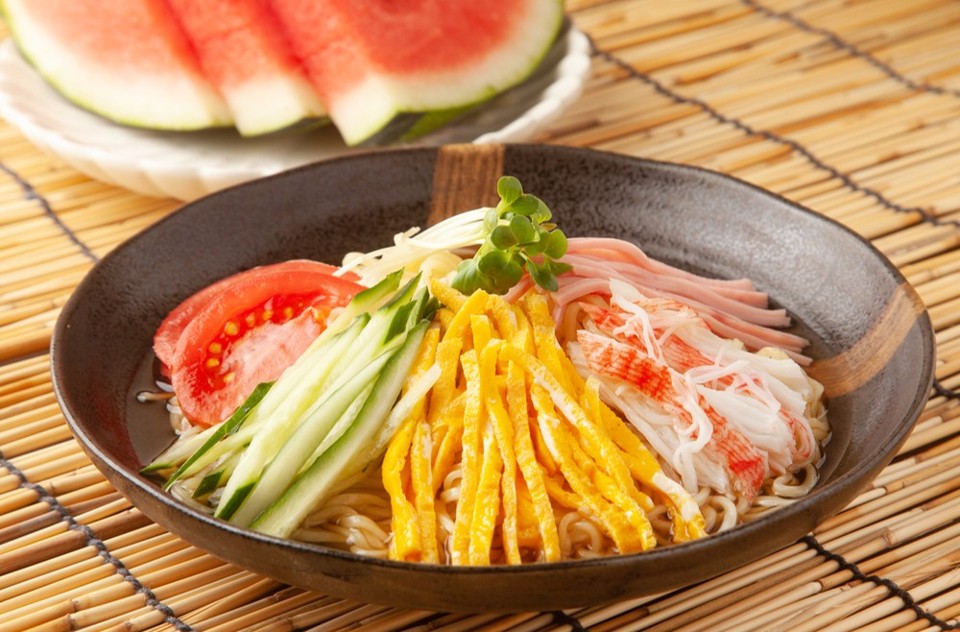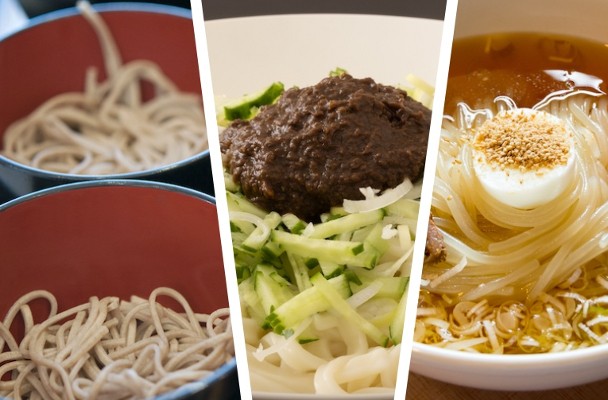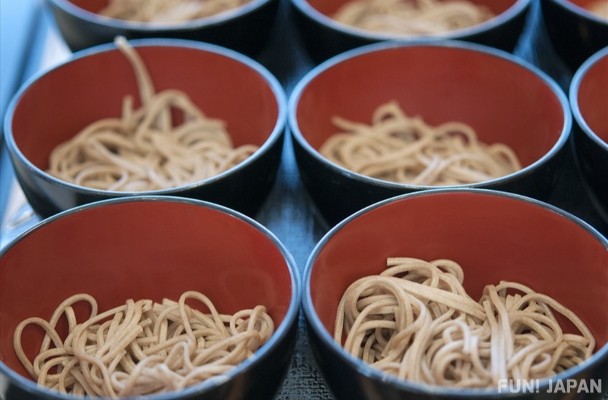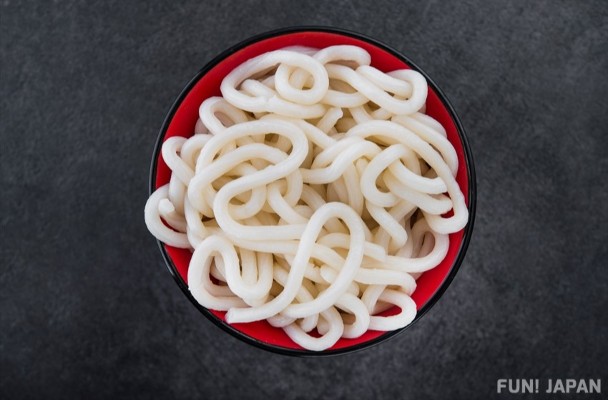July, when the full-fledged summer arrives. There may be quite a few people who lose their appetite due to the heat and have difficulty eating. This time, we will introduce six types of Japanese chilled noodles that are perfect for the hot summer, so please try making them at home and get through this summer energetically!
※If you purchase or reserve the products introduced in the article, a portion of the sales may be returned to FUN! JAPAN.
Editor's recommendation! 6 refreshing chilled noodles
Chilled Udon

Cold udon, which is eaten chilled, offers a smooth texture and firmness that is different from warm udon. In addition to the most popular cold udon dishes such as cold kake udon, zaru udon, and salad udon, there are also regional specialties such as "Suttate Udon" from Saitama Prefecture and "Koro Udon" from Nagoya, which have a strong local flavor and cannot be found elsewhere.
What's the difference between "Kake" and "Bukkake"?
Kake udon is soaked in a gently flavored soup, while Bukkake udon is served with a small amount of strong soup poured over it.
What's the difference between "Mori Udon" and "Zaru Udon"?
Zaru udon is topped with shredded seaweed, while Mori udon is not.
Zaru Soba

Zaru Soba is said to have been developed by a soba shop called "Iseya" in Fukagawa during the middle of the Edo period. It was invented to prevent the soba from becoming soggy due to the water accumulated at the bottom of the bowl. By placing the soba on a strainer that drains the water, you can enjoy delicious Zaru Soba until the end. However, there is also a particular order in which to eat it.
- Order ① First, eat it as it is without dipping it in anything to enjoy the original taste of the ingredients
- Order ② Dip it lightly in the sauce and eat
- Order ③ Gradually add condiments and eat
- Order ④ Eat with wasabi on the tip of your chopsticks or on the soba
- Order ⑤ Drink the soba-yu (the broth left after boiling the soba). You can also add condiments
Chilled Chinese Noodles

There are various theories about the origin of chilled Chinese noodles, but the most credible theory is that it started with "Liangban Mian" served by a Chinese restaurant "Ryutei" in Sendai City in 1937. At that time, Chinese restaurants did not have air conditioning, and there was a tendency for customers to stay away in the summer, which led to the development of chilled noodles that could be deliciously eaten even on hot days.
The spread of chilled Chinese noodles began after the war, and products for home use that could be easily made also appeared, causing a boom. Nowadays, it is eaten all over Japan, but the ingredients and sauce preferences vary depending on the region.
- Name: Chilled Chinese noodles (Kanto), Cold noodles (Kansai), Chilled Ramen (Hokkaido)
- Standard ingredients: cucumber, shredded egg, ham, tomato, crab stick
- Sauce: vinegar soy sauce, sesame sauce, mayonnaise
Somen

The origin of Somen can be traced back to the Nara period (710-794 AD), where it is believed to have evolved from "Sakubei" (also called "Muginawa"), a type of noodle introduced from China. It is also recognized as a representative festive food for Tanabata, as it evokes images of woven threads and the Milky Way.
Somen is cherished as a food for the hot summer, with its cold and refreshing texture and the fact that it can be cooked quickly and easily being widely accepted. Furthermore, it can be stored for a long period of time, making it useful as emergency food. Famous Somen brands include "Ibonoito" from Hyogo Prefecture, "Shodoshima Somen" from Kagawa Prefecture, and "Miwa Somen" from Nara Prefecture. However, it has now established its position as a home-cooked dish that can be easily enjoyed throughout Japan.
- Popular ingredients: Condiments (green onions, perilla leaves, myoga, yuzu pepper, etc.), okra, natto, tuna
- Recommended ways to eat: Chilled somen, Nagashi somen, Somen salad
Morioka Reimen

Morioka Reimen is one of the famous noodle dishes originated in Morioka City, Iwate Prefecture, and is renowned as one of the "Three Great Noodles of Morioka" along with "Wanko Soba" and "Jaja Noodles". Its origin lies in the Korean cold noodles, but it was further refined and improved by Mr. Teruhito Aoki, a first-generation Korean-Japanese noodle craftsman, who harmonized Pyongyang cold noodles and Hamheung cold noodles.
The characteristics of Morioka cold noodles include "strong chewiness and elasticity", "the soothing and refreshing feeling of noodles going down the throat", and "refreshing aftertaste". It is said to be addictive once you eat it. It can be said that it is a taste that has been arrived at after trial and error to suit the Japanese palate.
- Standard ingredients: Meat (beef, char siu, steamed chicken, etc.), boiled eggs, kimchi, fruits (watermelon, apple, pear, etc.)
- Soup: Oxtail, chicken bones
Cold Pasta

The history of cold pasta is quite recent, said to have been created by a three-star Italian chef who visited Japan in the 1970s, inspired by Japanese cold soba noodles. While there is no tradition of eating cold pasta in Italy, it has evolved uniquely in Japan, and not only Western-style but also Japanese-style with flavorful condiments are popular.
- Recommended ingredients: Smoked salmon, salmon roe, mozzarella cheese, zucchini, avocado
- Classic sauces: Tomato sauce, basil sauce, spicy cod roe cream
- Tips for deliciousness: ①Boil the pasta a little longer ②The salt concentration of the boiling water should be slightly higher (because the salt will be washed away when rinsed)
With chilled noodles, let's balance the nutrients that tend to be deficient in summer

Noodles are often thought to be "high in carbohydrates and easy to gain weight" and "unbalanced in nutrition", but actually, they can be transformed into a low-calorie healthy menu depending on how you arrange them! Keep the following points in mind and enjoy cold noodles deliciously and healthily.
Make sure to get enough protein
When you don't have an appetite, you should be conscious of protein intake, so we recommend actively including ingredients that contain high-quality protein such as pork shabu, chicken breast, and shrimp.
For those on a diet: Incorporate replacement ingredients
If you want to reduce your carbohydrate intake as much as possible, you can eat without guilt by using shirataki or soy noodles as a substitute for noodles!
Don't forget to replenish minerals
When you sweat, minerals are also excreted along with the water in your body, so it's important to replenish the lost minerals. Why not try making a dish full of minerals by combining ingredients that go well with cold noodles, such as wakame, natto, pickled plums, and vinegar.
Places where you can experience hand-made soba and udon

Have you ever wondered how traditional Japanese foods like udon and soba are made? Although it is said that adjusting the amount of water and the force used when making noodles is difficult, with professional guidance, even beginners can enjoy freshly made udon or soba on the spot! Children can also participate, so it's a fun activity for the whole family. If you're interested, please check out the links below.
👉 Reservation for Hand-made Soba Experience at Edogawa Kobo, Japan Soba Making Masters Association
👉 [Fukuoka/Kurume] Hand-made Udon Class at Takeya, Kyushu Chikugo
👉 Kyoto Classics: Cha Soba Cooking Class
👉 Oshinohakkai Soba Making Experience & Local Cuisine Cooking Class




Comments